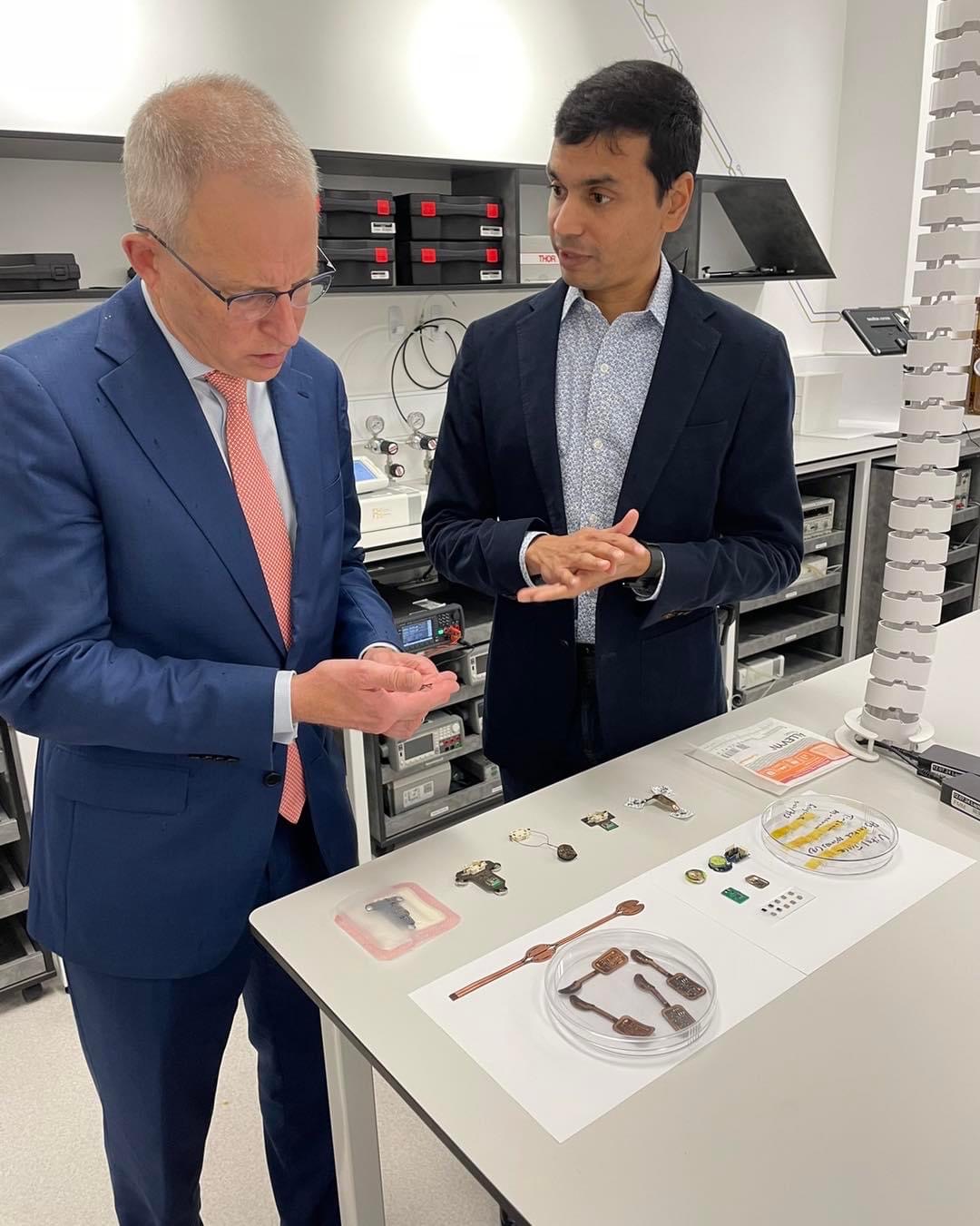Viewed
September Science Blog
In my new role as Shadow Minister for Science I have been getting out and about meeting some of Australia’s leading researchers - and getting a sense of the amazing work they are doing.
John Rasko is a prominent medical researcher clinician who heads the Gene and Stem Cell Therapy Program at the Centenary Institute in Sydney; he is also a Professor at Sydney University. John is also very committed to explaining science to non scientists, with regular ABC appearances including recently giving the Boyer lectures (and then expanding them into a book.) I visited his lab on the Royal Prince Alfred Hospital campus where he and his colleagues showed me some of the very sophisticated equipment they are using, and explained that genetic treatments can allow somebody suffering from a dangerous disease like haemophilia to effectively be completely cured.
At Macquarie University I met Professors Orsola de Marco and Richard McDermid at the Research Centre for Astronomy, Astrophysics and Astrophotonics, where I had the opportunity to look through some of their large and specialised telescopes. Orsola and Richard showed me how these devices integrate optical and electronic signals, andgenerate huge amounts of data which requires considerable computing power to process. I was impressed to learn how much effort the centre puts into explaining their work to the broader community, including their annual Astronomy Open Night where anybody who is interested can come along and look through a telescope! (You can buy tickets through the Macquarie University website.)
On a visit to RMIT University in Melbourne, I visited the dynamic husband and wife research team, Professors Sharath Sriram and Madhu Bhaskaran, who jointly founded and lead a team in 'Functional Materials and Microsystems.' The focus of their work is translating discoveries at extremely small size scales into technology for electronics, communication, and biomedicine. They showed me very small devices which can be ingested into the body, as well as flexible transparent patches which can be attached to the body, in each case capturing and transmitting diagnostic data.
At Monash University, I was shown around by Professors Jordan Nash, Michael Fuhrer and John Carroll. First stop was the Green Ammonia Lab where a university spin out company is scaling up a new zero emissions way to manufacture ammonia, a chemical used across the economy.
Next, at the ARC Centre of Excellence in Future Low Energy Electronics Technologies (FLEET) I was briefed on their work into future technologies which will replace silicon chips. And at the Monash Biomedicine Discovery Institute I met researchers doing leading edge work on mRNA technology and gene editing.
What do I take away from these visits? Firstly, is Australia fortunate to have such extraordinarily skilled, knowledgeableand intellectually curious scientists. Secondly, scientific communities are global: many of the people I met have moved to Australia to take up a research post here, or alternatively studied in Australia and worked overseas for many years before returning home.
My third observation: so much exciting work is happening at the overlap and intersection of different disciplines. The combination of engineering and biology I saw at RMIT; the importance of computing power to leading edge work in genetics as both John Rasko and John Carroll emphasised to me; and the crossover between physics and engineering which typifies much of the work at FLEET, are but three examples of many.
Lastly, I was struck by how much focus there was, from each of the researchers I met, on the practical social and economic benefits which could flow from the work they are doing. Those benefits could be new medicines which can prevent once feared genetic disorders from destroying lives; or new emissions-free ways of producing vital industrial chemicals; or enabling more powerful computers by replacing silicon chips with materials which support even faster processing.
Which brings me to a final point: how best to support the process by which promising research can be turned into a product which is taken to market? This was a major priority for our Liberal National Government, and the March 2022 budget committed $1.6 billion to kickstart Australia's Economic Accelerator, a competitive funding program to support research projects with high commercial opportunity. It will be very important that the new government supports and maintains this program, rather than using it as an opportunity to find savings in the October budget. 
